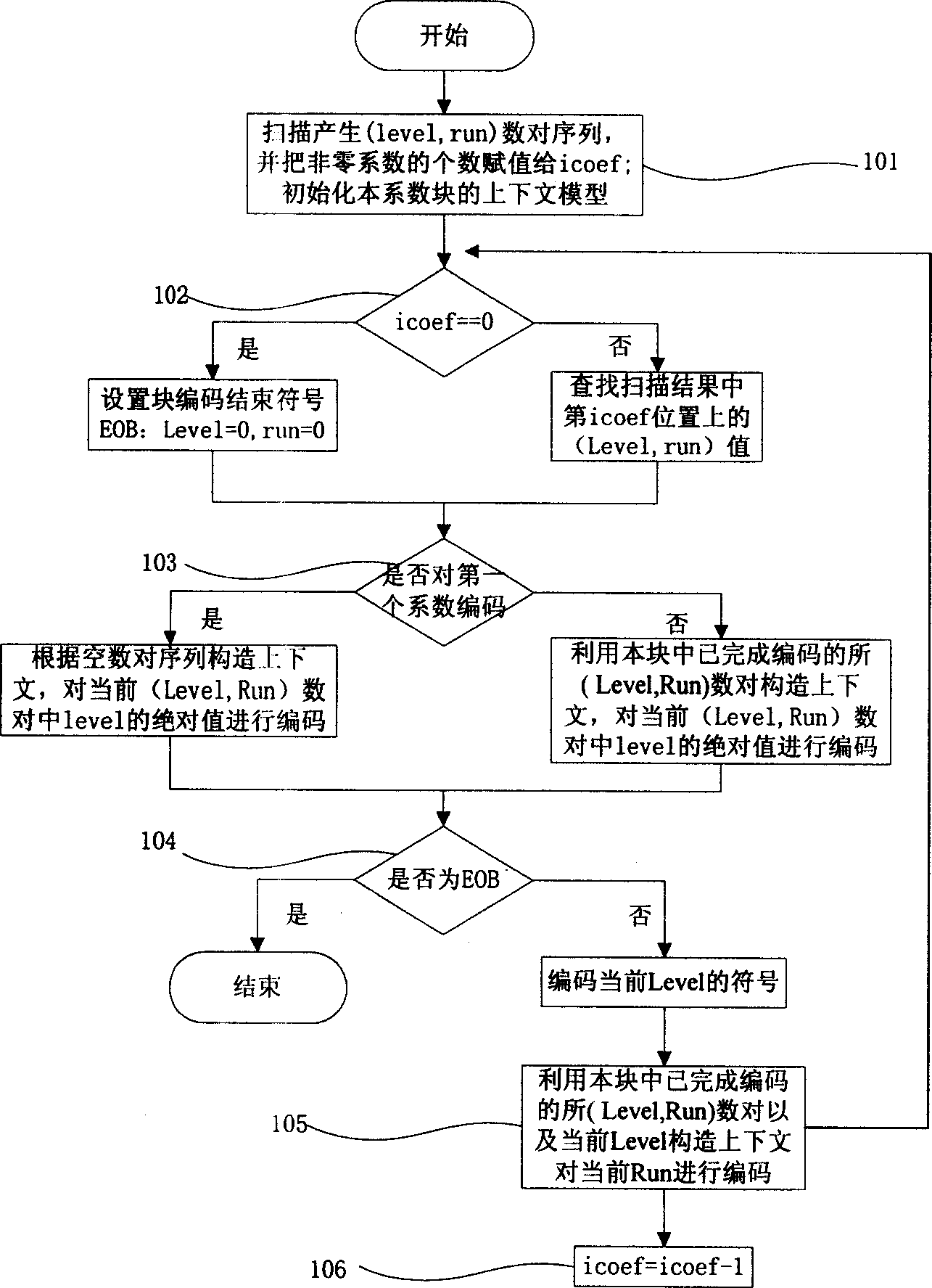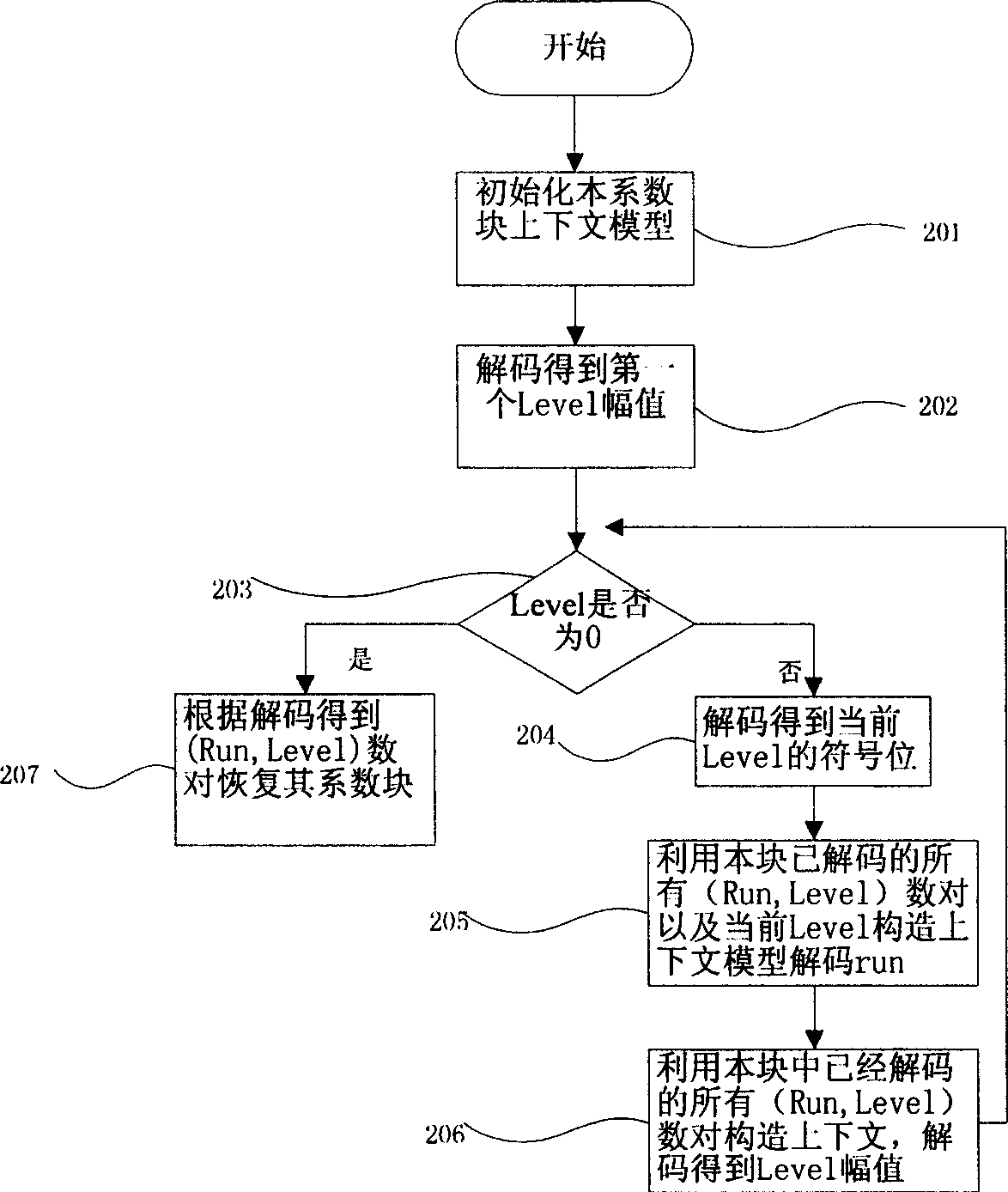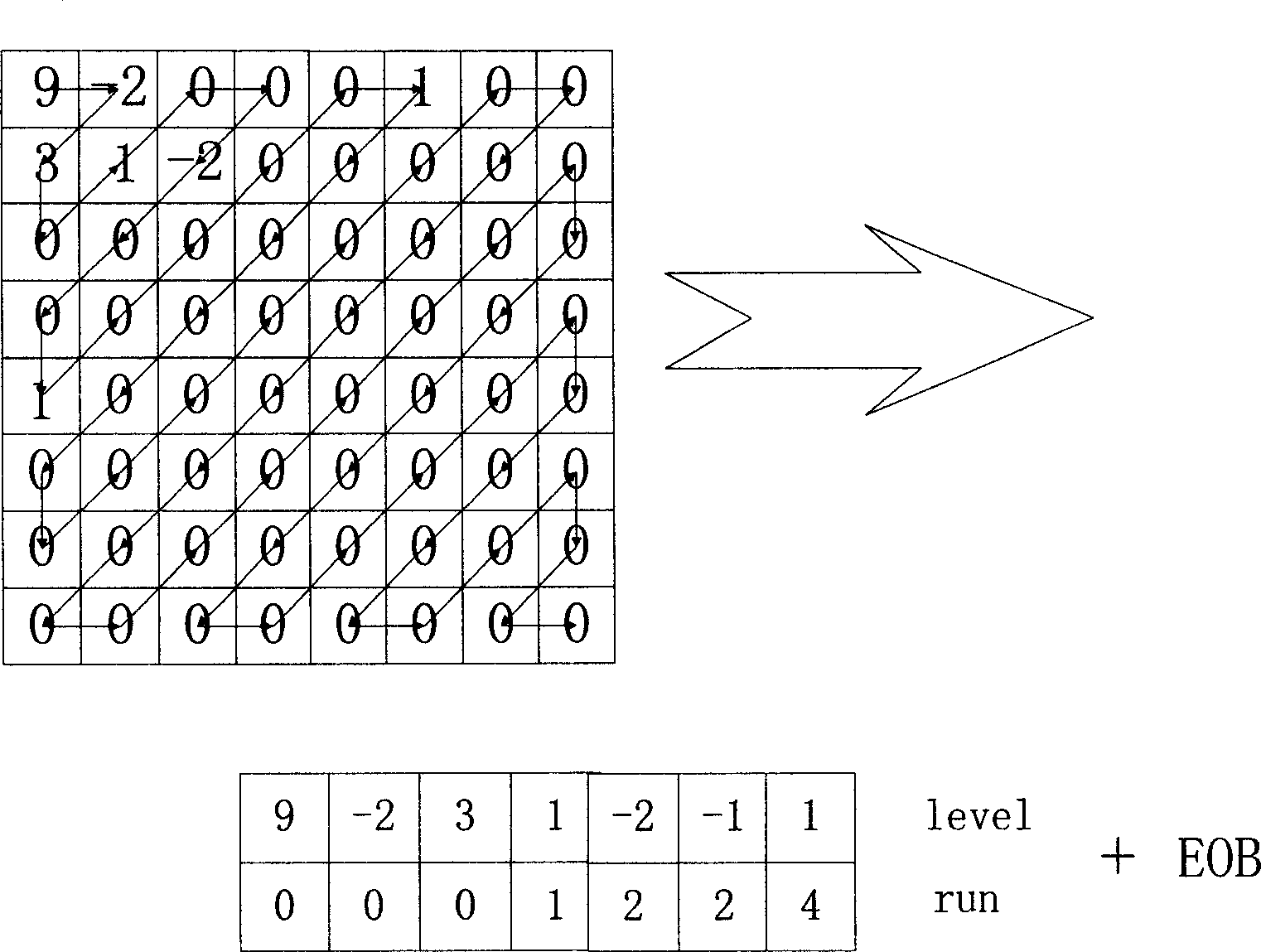Adaptive entropy coding/decoding method based on context
A context and entropy coding technology, applied in code conversion, television, electrical components, etc., can solve the problem of low compression performance, achieve the effect of improving compression performance, avoiding adverse effects, and improving effectiveness
- Summary
- Abstract
- Description
- Claims
- Application Information
AI Technical Summary
Problems solved by technology
Method used
Image
Examples
Embodiment 1
[0035] Such as figure 1 , 2 Shown is Embodiment 1 of the present invention, and the specific coding steps are:
[0036] Step 101, scan the current DCT-transformed and quantized coefficient block to form a sequence of (level, run) pairs to obtain the number of non-zero coefficients; initialize the context model of the coefficient block;
[0037] Step 102, if the value of the non-zero coefficient is zero, then obtain EOB information, that is, a (0,0) number pair; if the value of the non-zero coefficient is not zero, then search for the value of the non-zero coefficient in the scan result (level, run) number pairs at the position of the number of non-zero coefficients;
[0038]Step 103, if the first coefficient is coded, construct the first context according to the empty sequence; otherwise, construct the first context according to all pairs of numbers that have been coded in the coefficient block, and use the context weighting method to calculate the current level The absolut...
Embodiment 2
[0050] The following is embodiment two of the present invention, and embodiment 2 is the implementation of the present invention in Chinese AVS:
[0051] Description of the key technologies of this embodiment:
[0052] 1. Scanning order and encoding order of DCT coefficient blocks:
[0053] Scanning of DCT coefficients is a process of arranging two-dimensional or multi-dimensional DCT coefficients into a one-dimensional sequence. The principle followed is to make the probability of the coefficients being zero after the arrangement show an increasing law. The classic zigzag scanning in JPEG and MPEG, the scanning of AVS coefficient blocks in China, and the scanning methods for different coefficient block sizes and different field / frame modes in H264 all follow this rule.
[0054] The scanned one-dimensional coefficient random sequence approximately satisfies the law of increasing probability of zero. After converting into (level, run) pairs, we encode each pair in the revers...
PUM
 Login to View More
Login to View More Abstract
Description
Claims
Application Information
 Login to View More
Login to View More - R&D
- Intellectual Property
- Life Sciences
- Materials
- Tech Scout
- Unparalleled Data Quality
- Higher Quality Content
- 60% Fewer Hallucinations
Browse by: Latest US Patents, China's latest patents, Technical Efficacy Thesaurus, Application Domain, Technology Topic, Popular Technical Reports.
© 2025 PatSnap. All rights reserved.Legal|Privacy policy|Modern Slavery Act Transparency Statement|Sitemap|About US| Contact US: help@patsnap.com



